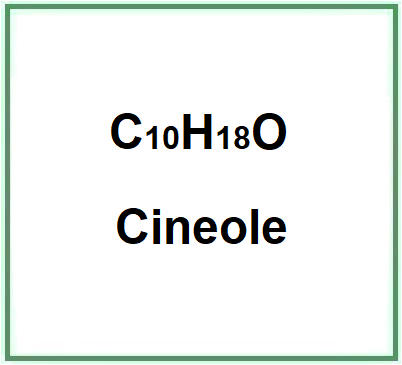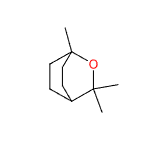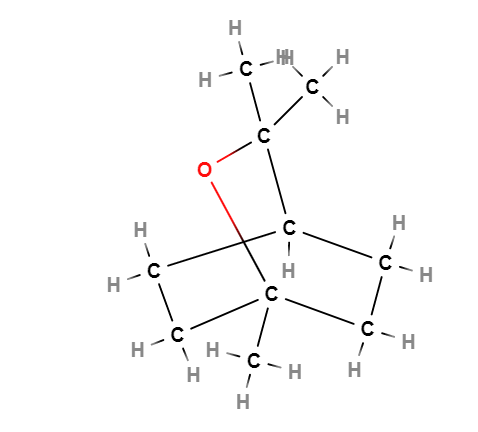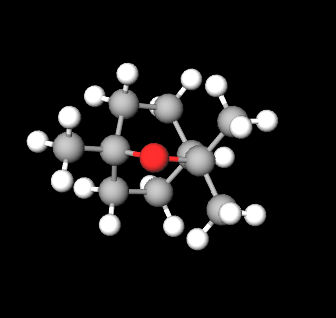Cineole (Eucaliptolo) is a natural component, terpenoid oxide or monoterpene (also called 1,8-cineole) that is mainly obtained from the plant Eucalyptus (Eucalyptus globulus) belonging to the Myrtaceae family.
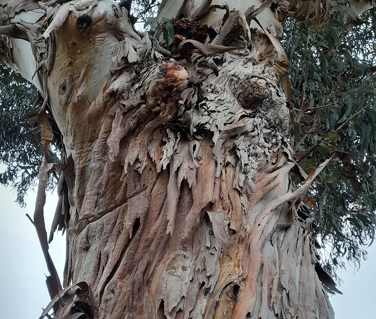
1,8-Dihydroxy-10-carboxy-p-menthane, 2-hydroxy-cineole and 3-hydroxy-cineole are the main metabolites of eucalyptol.
It is also found in all mint species and in spices such as Aframomum melegueta and Aframomum danielli.
Industrially it appears as a colourless to yellowish liquid. Stable. Inflammable. Incompatible with acids, bases and strong oxidising agents.

What it is used for and where
Medical
Included in cough mouthwashes, it controls hypersecretion in the airways and asthma through the inhibition of anti-inflammatory cytokines.
The most interesting ingredients, from a health point of view, of Eucalyptus are mainly alkaloids, flavonoids, pigments, phenolics, terpenes, amides, steroids and essential oils. Recent studies have shown its antimicrobial effects against bacterial, fungal, parasitic and viral agents (1).
Methanol extract (8:2) has shown significant anti-inflammatory activity through membrane stabilisation and other processes involving protein denaturation (2).
Another interesting application of eucalyptus essential oil is its larvicidal and insecticidal potential and can therefore be used in the community in artificial water bodies as an eco-friendly vector control measure in the era of increasing resistance to chemical insecticides (3).
The data emerging from this study clarify other health-oriented characteristics of the use of the aqueous leaf extract of Eucalyptus globulus that may play an important role as an antihypertensive agent to reduce the burden of cardiovascular complications (4).
Cosmetics
Antiseptic and healing agent.
Food
Flavouring at low levels (0.002%) in meat products, bakery products, confectionery.
The most relevant studies on this ingredient have been selected with a summary of their contents:
Eucalyptol studies
| Appearance | Yellowish liquid |
| Boiling Point | 174.0±8.0°C at 760 mmHg |
| Melting Point | 1.5ºC |
| Flash Point | 50.9±15.3°C |
| Density | 0.9±0.1 g/cm3 |
| Vapor Pressure | 1.6±0.3 mmHg at 25°C |
| Refraction Index | 1.461 |
| PSA | 9.23000 |
| LogP | 2.82 |
| Specific gravity | 0.920-0.925(20℃) |
| Refractive index | 1.4550-1.4600(20℃) |
| Optical rotation | -0.5°—﹢0.5°(20℃) |
| Solubility | 1:5 / 60% alcohol solution |
| Chemical Safety |  |
- Molecular Formula C10H18O
- Molecular Weight 154.25
- Exact Mass 154.135757
- CAS 470-82-6
- UNII RV6J6604TK
- EC Number 207-431-5
- DSSTox Substance ID DTXSID4020616
- IUPAC 1,3,3-trimethyl-2-oxabicyclo[2.2.2]octane
- InChl=1S/C10H18O/c1-9(2)8-4-6-10(3,11-9)7-5-8/h8H,4-7H2,1-3H3
- InChl Key WEEGYLXZBRQIMU-UHFFFAOYSA-N
- SMILES CC1(C2CCC(O1)(CC2)C)C
- MDL number MFCD00167977
- PubChem Substance ID 24893017
- ChEBI 27961
- RTECS OS9275000
- FEMA 2465
- JECFA 1234
- Beilstein 105109
- NCI C107375 C65603 C76772
- RXCUI 21116
- NSC 760388 6171
- UN 1993
Synonyms:
- Cineole
- 1,8-cineole
- 1,3,3-Trimethyl-2-oxabicyclo[2.2.2]octane
- 1,8-Epoxy-p-menthane
References____________________________________________________________________
(1) Ghasemian A, Eslami M, Hasanvand F, Bozorgi H, Al-Abodi HR. Eucalyptus camaldulensis properties for use in the eradication of infections. Comp Immunol Microbiol Infect Dis. 2019 Aug;65:234-237. doi: 10.1016/j.cimid.2019.04.007.
(2) Ashour RMS, Okba MM, Menze ET, El Gedaily RA. J Eucalyptus Sideroxylon Bark Anti-inflammatory Potential, Its UPLC-PDA-ESI-qTOF-MS Profiling, and Isolation of a New Phloroglucinol. Chromatogr Sci. 2019 Jul 1;57(6):565-574. doi: 10.1093/chromsci/bmz029.
(3) Kaura T, Mewara A, Zaman K, Sharma A, Agrawal SK, Thakur V, Garg A, Sehgal R. Utilizing larvicidal and pupicidal efficacy of Eucalyptus and neem oil against Aedes mosquito: An approach for mosquito control. Trop Parasitol. 2019 Jan-Jun;9(1):12-17. doi: 10.4103/tp.TP_35_18. Epub 2019 May 22.
(4) Ajebli M, Eddouks M. Eucalyptus globulus possesses antihypertensive activity in L-NAME-induced hypertensive rats and relaxes isolated rat thoracic aorta through nitric oxide pathway. Nat Prod Res. 2019 Apr 10:1-3. doi: 10.1080/14786419.2019.1598992
![]() Cineole
Cineole 

